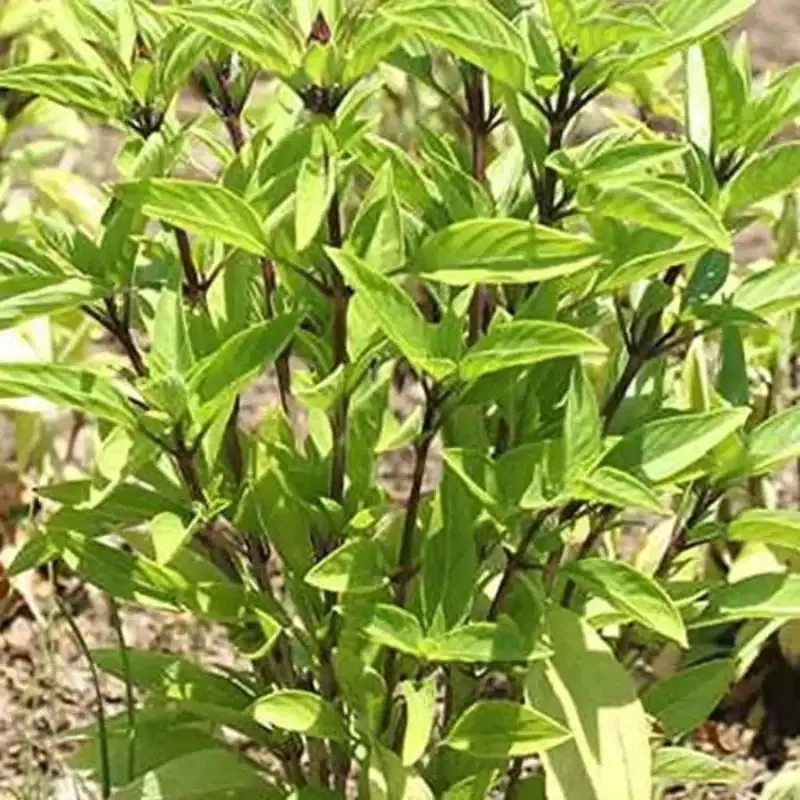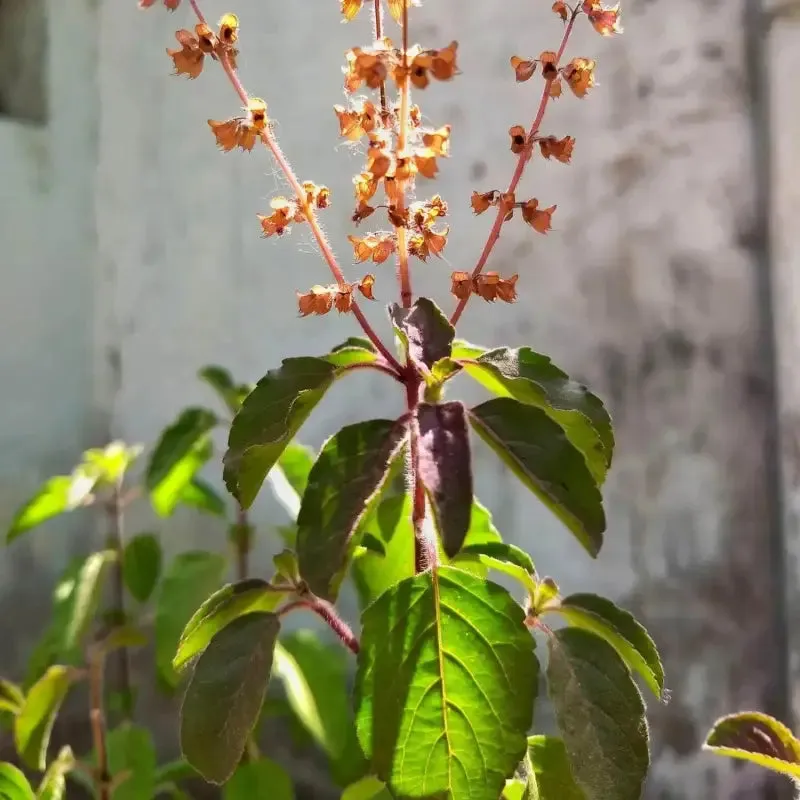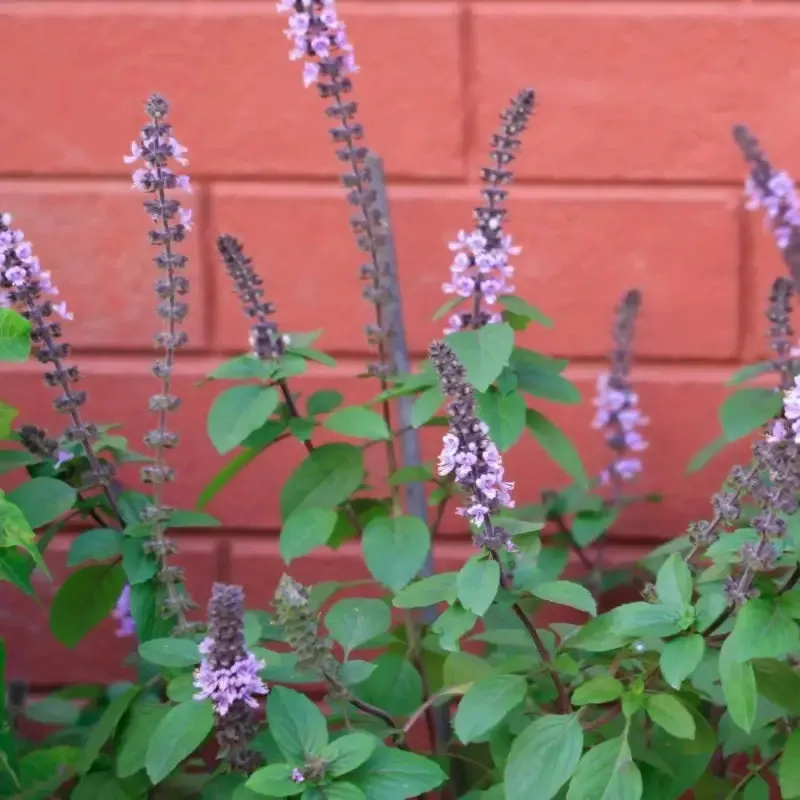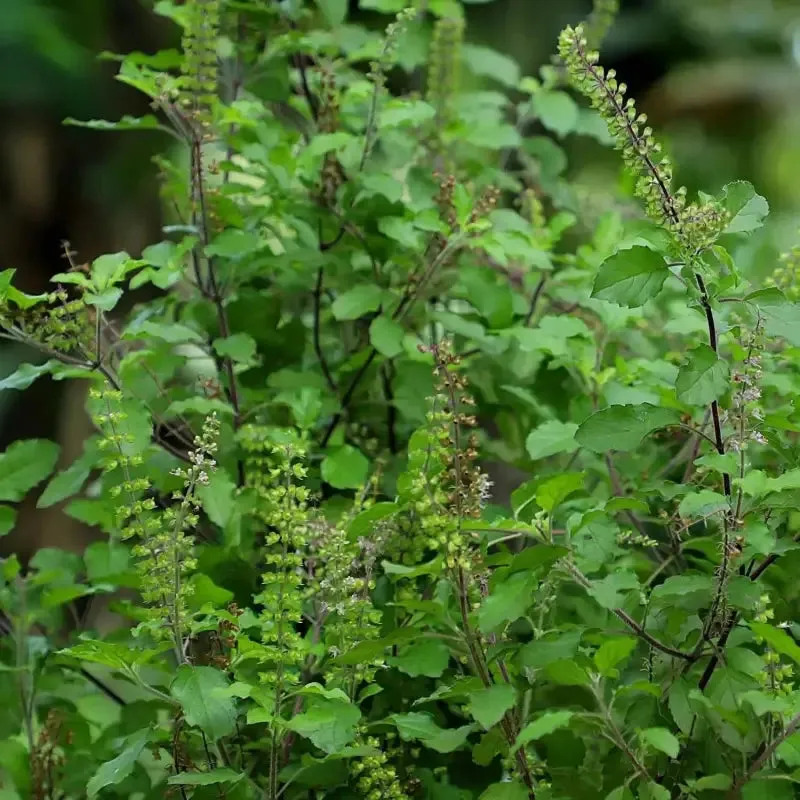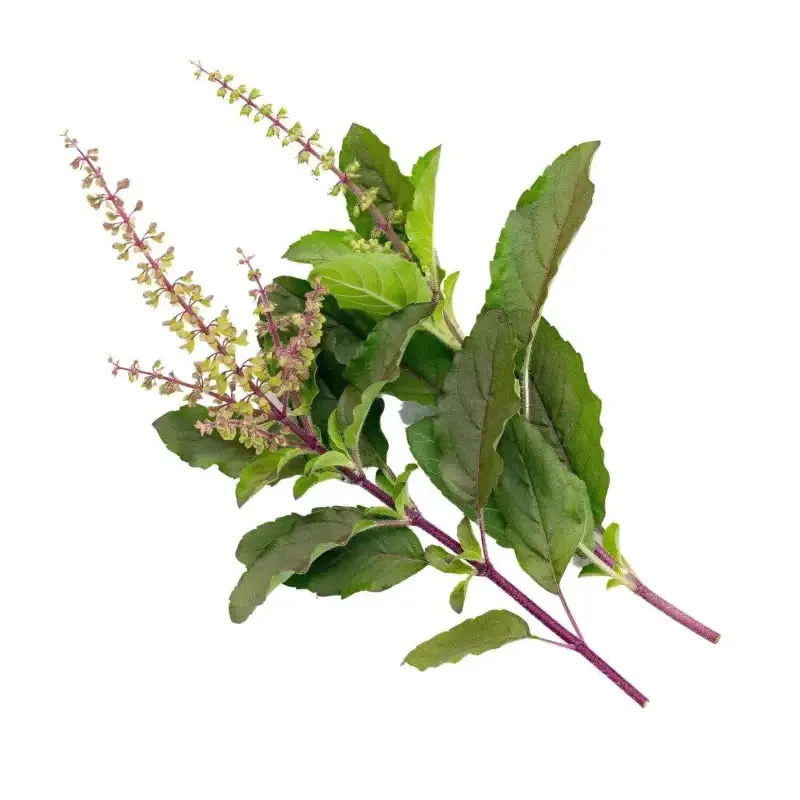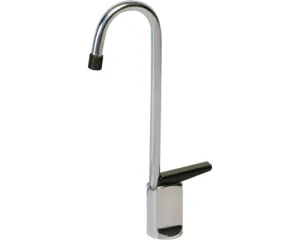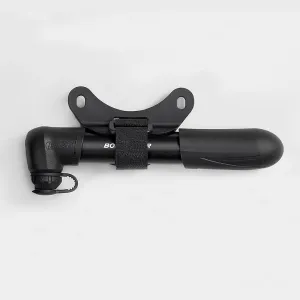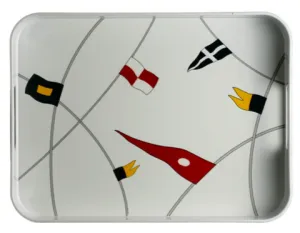Basil seeds for planting
These three thousand Holy Basil Seeds will launch you into the world of fragrant gardening. Ocimum tenuiflorum, more commonly known as Thai Basil or Tulsi, is the scientific name for these fragrant and flavorful seeds. Carefully sourced from dedicated farmers, each seed has the potential for development and vigor.
A Basilian Bounty
This package isn’t simply a collection of seeds; it’s a treasure trove for any herb fan. This enormous amount is ideal for starting a verdant basil patch or for bringing the joy of gardening to a group of loved ones. Envision each , carrying the Holy Basil spirit with it.
A Vibrant Garden
As you sow these seeds, you are essentially leading a natural symphony. As you add Holy Basil plants to your garden, you'll notice a dramatic change as each one brings its own flavor and scent. From the fragrant aroma of basil in the air to the earthy smell of the soil, it's a sensory experience.
Delights in the Kitchen and Health
Throughout its long and storied history, holy basil has served as both a . Savor the one-of-a-kind flavor in your cooking or make a relaxing cup of tea. There is a wealth of cultural meaning and practical use for this plant in every leaf.
Perfectly Preserved Seeds
Our sturdy packaging will keep these priceless seeds fresh until you're ready to start planting. It's like cherishing a potential for future expansion, keeping it hidden until the time is right to realize it.
Effortless Gardening
No matter your level of gardening experience, these Holy Basil journey. It's not just about plants; it's about caring for life, taking pleasure in the mundane process of seeing something develop, and being one with nature's cyclical rhythms.
In each serving of Holy Basil Seeds, you will find 17 grams of fiber and 6 grams of protein. Additionally, there is only 1 gram of net carbs per serving.
What products are frequently purchased with Holy Basil Seeds?
Customers often choose to purchase Mushroom Powder, , Organic Coconut Protein Blend, Beet Root Powder, and Gluten Free Flour With Fiber along with Holy Basil Seeds.
Recipes that use Holy Basil Seeds
- Peanut Butter Müesli Bowl
- Viral Brain Boosting Smoothie
- Nutty Cream Cheese Antipasto
What happens when you put holy basil seeds in water?
When holy basil seeds are put in water, the soluble fiber outer layer of the seeds absorbs the water and transforms into a swollen, gel-like coating. These soaked seeds are often used in beverages and sweet dishes to introduce a distinctive texture, enhancing the overall experience of consuming them. One popular idea is to soak these seeds and incorporate them into a tea to make a delightful Holy Basil Seed Tea.
Basil seeds
The Results of Growing Thai Basil Capsules from Seed
Since I like both gardening and cooking, I decided to produce Ocimum basilicum, often known as Thai basil, from non-GMO seeds. This Lamiaceae family member (mint) is trending because to its delicious flavor and pleasant aroma. Tropical Asia and Africa are the birthplaces of the delicate plant known as Thai basil, which has a gentle perfume and flavor. That is my narrative, from sowing seeds to enjoying the bounty of my culinary effort.
The fragrant leaves give meat dishes, soups, and stews a global taste boost.
According to the guidelines for choosing , seeds should produce a large harvest of basil leaves.
Knowing that Thai basil plants need a lot of light, I picked a site with full sun and soil that drains well.
We used the direct sowing method to uniformly disseminate the seeds. Carefully sowing the seeds requires pushing them into the dirt just enough to cover them, but not too much.
In order for seeds to germinate, they must be sufficiently wet but not drenched.
Considering the plant's robust flavor, the fact that the in as little as 35 to 40 days is very astounding.
The seedlings were carefully planted seven inches apart.
Thai basil, if given enough water and trimmed every so often, may grow into a large, bushy plant.
It was obvious that the plant's capacity to bloom was proportional to its age. The blossoms may be eaten if desired, but I had to periodically sample them to ensure they weren't very bitter.
By holding off on harvesting the had finished blooming, I could maximize their taste.
Things that everyone is sure to adore: I have used Thai basil leaves in a wide variety of dishes, from traditional Southeast Asian fare to contemporary pastas and salads, thanks to their adaptability.
Some Reflections on Growing Thai Basil
The process of growing a seedling of Thai basil was both instructive and entertaining. It was the ideal chance for me to indulge my passions for gardening and cooking. Because of its low maintenance needs and multipurpose nature, this plant is ideal for novice gardeners. The chance to cultivate Thai basil from seed was a once-in-a lifetime event for me. You can utilize this versatile plant for a lot of different things, like producing spicy curries and adding flavor to beverages.
- Sabja or tukmaria seeds are basil seeds in English. They have a long history of use in Ayurvedic and Chinese medicine, but their health effects have only been tested in a f…
- Basil seeds aren’t just for growing basil plants — you can also eat them.
- They look similar to sesame seeds but are black.
To grow Thai basil from seeds, you can follow these steps:
- Directly seed Thai basil a quarter-inch deep, with a few seeds every inch. Space rows about 18 inches apart.
- Thin seedlings to eight to 12 inches apart to give mature plants adequate airflow and room to grow.
- Keep the soil moist.
- Alternatively, you can start Thai basil indoors by seeding in flats or trays around six weeks before your region's last frost date.
- Thai basil seeds typically germinate in ten days. When the seeds sprout, move them to a place with bright, indirect lighting. Keep the soil evenly damp and provide adequate lighting until the plant forms true leaves and all threat of frost is over
To grow Thai basil, follow these steps:
- Plant Thai basil seedlings outdoors in late spring when soil temperatures are around 70 degrees and night temperatures are consistently above 50 degrees.
- Seed Thai basil about a quarter-inch deep in a spot with moist, well-drained soil and full to part sun.
- Plant or thin Thai basil seedlings to put about 12 inches between plants.
- Provide well-draining, rich soil, full sun or bright light, moderate watering, warm temperatures, and high humidity.
- Prune the Thai basil plant regularly to prolong its lifespan and encourage branching.
Learn how to plant, care for, harvest, and propagate Thai basil, a spicy and aromatic herb native to Southeast Asia. Find out the differences between Thai basil and holy basil, and how to grow Thai basil in pots or from seed.
Like sweet basil, Thai basil plants are easy to grow. Start seeds indoors about six weeks before your last frost date in the spring. Plant Thai basil seedlings outdoors in late spring when soil temperatures are around 70 degrees and night temperatures are consistently
Thai basil called káu-chàn-thah in Taiwan, is a type of basil native to Southeast Asia that has been cultivated to provide distinctive traits.
Thai basil is known for its differing flavor, appearance, and ability to hold up better in culinary uses. Thai basil has a stronger flavor profile and aroma than the more commonly grown, sweet basil.
It’s also important to prune your Thai basil plant every two weeks to support its growth. Trim the buds as it's growing to promote more stem growth and more leaves.
At a glance, the most distinguishable difference is the color of the stems: Thai basil has a purple stem and sweet basil has a green stem.
How to Plant Thai Basil
Like sweet basil, Thai basil plants are easy to grow. Start seeds indoors about six weeks before your last frost date in the spring. Plant Thai basil seedlings outdoors in late spring when soil temperatures are around 70 degrees and night temperatures are consistently above 50 degrees.
Seed Thai basil about a quarter-inch deep in a spot with moist, well-drained soil and full to part sun. Plant or thin Thai basil seedlings to put about 12 inches between plants. You can also plant Thai basil seeds or seedlings in containers.
Thai basil plants bloom in mid-to-late summer, depending on your region. Pinch back the tiny purple flowers to keep the plant from setting seed and encourage leaf growth.
Light
Thai basil plants grow best in a spot that gets at least six hours of direct sun per day. In very hot climates, the plant prefers part sun; choose a spot with morning sun and afternoon shade to shield it during the hottest part of the day.
Soil
Plant Thai basil in rich, well-drained soil that holds moisture well. Work organic compost into the soil a few weeks before planting or add one part compost to two parts potting mix if growing in containers.
Water
Keep your Thai basil plant's soil consistently moist with regular watering during periods without rain. Consider dressing the soil around the plants with an organic mulch like hay or straw to help maintain soil moisture.
Temperature and Humidity
Thai basil prefers the warm, humid conditions of its native region. Wait until daytime temperatures are consistently above 70 degrees and night temperatures are above 50 degrees to plant seeds or starts outdoors. Temperatures below 50 degrees can stunt the plant's growth. Later in the season, harvest Thai basil before night temperatures hit 40 degrees, which can damage the leaves.
Fertilizer
If you plant Thai basil in rich soil, it shouldn't need any fertilizer. If you'd like to promote more vigorous growth, feed the plant with a balanced fertilizer every few weeks during the summer. This is especially beneficial when you're pinching back plants to promote growth or harvesting frequently.
Types of Thai Basil
There are several cultivars of Thai basil, including:
'Siam Queen' (Ocimum basilicum 'Siam Queen'): This award-winning cultivar is known for its tender, highly aromatic leaves, which retain their scent at higher cooking temperatures than other types.
'Queenette' (Ocimum basilicum 'Queenette'): Compact with long purple stems and relatively showy blossoms, this Thai basil cultivar is ideal for ornamental and culinary use.
'Thai Magic' (Ocimum basilicum 'Thai Magic'): This cultivar offers a mild, sweet flavor with dark magenta flower clusters that pop against bright green leaves.
Thai Basil vs. Holy Basil
Thai basil is just one of the dozens of varieties of Ocimum basilicum. It's sometimes confused with holy basil, also known as tulsi (Ocimum tenuiflorum). Depending on the cultivar, Thai basil and holy basil may have a similar minty, peppery, or licorice-like scent, but the plants are two distinct species. Both have slightly serrated leaf edges and grow tiny purple flowers, but Thai basil has dark purple stems, while holy basil has green stems.
Harvesting Thai Basil Plants
Harvest Thai basil by picking the upper sets of leaves from each branch, which will encourage growth. Harvesting lower on the plant can inhibit growth. Frequent harvesting, as often as every other day, will encourage more vigorous regrowth.
Store Thai basil by placing the stem ends in a glass of water, then covering the glass with a clear plastic bag. Keep the glass at room temperature, as refrigeration damages basil leaves. Change the water every few days and use as needed.
How to Grow Thai Basil Plants in Pots
Thai basil grows well in containers. Put a single plant in a 12-inch deep pot with drainage holes and rich, loose potting mix. Use a plastic or glazed ceramic pot, as porous materials like terra cotta will let the soil dry out too quickly.
Pruning
Once a young Thai basil plant has six to eight sets of leaves, pinch off the top set of leaves to encourage branching and fuller growth. Do this on subsequent branches and use the leaves in recipes.
Propagating Thai Basil Plants
You can propagate healthy, mature Thai basil plants using stem cuttings. You'll need sharp scissors or pruners, a small glass or jar, and water. Here's how to do it:
Examine the mother plant and choose a healthy-looking stem with several leaves.
Make a diagonal cut about six inches from the stem tip and just below a leaf node. Remove the leaves on the lower half of the stem.
Place the cutting in a jar of water so the leaf nodes are submerged.
Keep the cutting in a warm place with lots of bright light. After a few weeks, you should be able to see roots growing from the stem.
When the roots are at least an inch long, you can pot up the cutting and care for it as usual.
How to Grow Thai Basil Plants From Seed
Directly seed Thai basil a quarter-inch deep, with a few seeds every inch. Space rows about 18 inches apart. Thin seedlings to eight to 12 inches apart to give mature plants adequate airflow and room to grow. Keep soil moist.
You can also start Thai basil indoors by seeding in flats or trays around six weeks before your region's last frost date. Harden off seedlings gradually for a few weeks before planting outdoors.
Common Pests and Plant Diseases
Watch out for plant damage from common pests like aphids, slugs, and Japanese beetles. Pick off Japanese beetles and drop them in a bucket of soapy water. Use insecticidal soap to treat aphids and diatomaceous earth or slug baits to kill slugs.
Plant diseases like fusarium wilt and bacterial leaf spot can affect Thai basil plants. The best way to avoid these is by watering the soil directly to avoid getting the leaves wet.
FAQ
Are Thai basil plants easy to grow?
Yes, Thai basil is easy to grow in the right conditions. The main consideration after planting is keeping the soil moist in the heat of summer.
How long does it take to grow Thai basil?
Thai basil plants started from seed can be ready to harvest in as little as seven weeks depending on the growing conditions and the cultivar.
Does Thai basil come back every year?
Thai basil plants are perennial in tropical climates and come back each year. Because the plant is very sensitive to cold temperatures, it's typically grown as an annual that must be planted again each spring.

